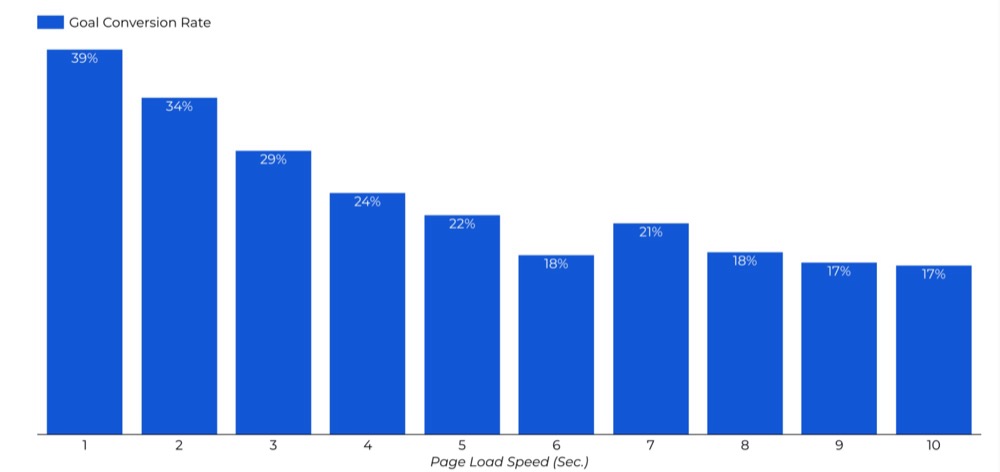10 Effective Ecommerce CRO Strategies That Actually Drive Growth
Most ecommerce teams optimize for speed. Few focus on trust.
As privacy laws tighten and third-party cookies fade out, traditional CRO tactics are losing ground. Shoppers are becoming more cautious, expecting transparency, relevance, and a seamless experience—without feeling tracked. Instead of simply boosting click-through rate (CTR), modern CRO must employ smarter testing and ethical personalization.
This guide shares 10 data-backed ecommerce CRO strategies to improve performance while meeting today’s privacy expectations and user needs.
What Is Ecommerce CRO? (And Why It Matters)
Ecommerce conversion rate optimization (CRO) is the practice of turning more site visitors into paying customers through better design and smarter testing. That might mean refining product pages, simplifying checkout, or tailoring experiences for different user segments.
Done right, ecommerce CRO:
- Increases revenue and average order value (AOV)
- Helps build trust and credibility
- Improves retention
- Reduces friction across the customer journey
- Enables teams to act on data, not assumptions
What’s a Good Ecommerce Conversion Rate?
There’s no universal “good” ecommerce conversion rate. What counts as strong performance depends on your product, audience intent, traffic source, and device type.
According to IRP Commerce, the average ecommerce conversion rate in April 2025 was 1.83% across all sectors.
A Littledata study of over 2,800 Shopify stores shared these findings:
- Average conversion rate: 1.4%
- Top 20% performers: 3.2% or higher
- Top 10%: 4.7% or higher
- Desktop users: 1.9% conversion
- Mobile users: 1.2%
These benchmarks aren’t goals—they’re context. Define your KPIs according to user behavior, device trends, and purchase decisions.
Even with solid benchmarks, a poor test setup can skew results. Watch out for these common split testing mistakes.
How to Calculate Ecommerce Conversion Rate
Here’s the basic formula:
Conversion rate = (Number of purchases ÷ Total website visitors) × 100
Example: If 5,000 people visit your site and 150 buy, your conversion rate is (150 ÷ 5,000) × 100 = 3%.
Other Metrics to Guide Smart Ecommerce CRO Decisions
Conversion rates aren’t the entire picture. Here are additional metrics to track:
- Bounce rate: The percentage of visitors who leave after viewing only one webpage. A high bounce rate often signals poor first impressions or misaligned traffic sources.
- Cart abandonment rate: How many users add items to a shopping cart but don’t buy. Identifying friction here can unlock revenue gains.
- Average order value (AOV): The average amount spent per order. Optimizing AOV can increase revenue without additional traffic.
- Revenue per visitor (RPV): A precise metric that ties value to each visitor. It’s especially helpful for evaluating the quality of traffic, not just quantity.
- Customer lifetime value (CLV): How much a customer is worth over time. A strong CLV-to-CAC (customer acquisition cost) ratio signals healthy growth.
10 Data-Driven Strategies for Optimizing Your Ecommerce CRO
There’s no silver bullet in CRO, but proven strategies can help reduce friction, increase trust, and support long-term growth.
1. Improve Site Speed
Speed is an underrated trust signal. When pages load slowly, users hesitate—and hesitation kills conversions.
A Portent study found that a 1-second load time delivers nearly 40% conversion. At 2 seconds, it drops to 34%, and it’s just 18% at 6 seconds.

To improve speed and conversion:
- Compress and convert images to next-gen formats like WebP
- Use lazy loading for offscreen assets
- Defer or remove non-essential third-party scripts
- Upgrade hosting or add a CDN for global delivery
On high-traffic pages, use SmartInsert to avoid flicker or script delays during experiments.
2. Add Trust Signals
Not all cart abandoners are price-sensitive. They might just not trust you.
According to Baymard, 19% of US shoppers abandon checkout due to security concerns. SSL isn’t enough—it’s about what’s visible and when.
Show that your ecommerce store is secure with:
- Payment processor logos and security badges
- Clear return and refund policies
- Reviews, testimonials, and “verified purchase” labels
- Media mentions or certifications
Place trust signals where they matter, like near your call-to-action (CTA) buttons or checkout form.
3. Optimize Product Pages
Many product pages still feel like digital catalogs—cluttered and missing cues that lead to confident decisions.
Treat them like landing pages instead:
- Lead with what the product does, who it’s for, and why it matters.
- Use sections and headers to guide users.
- Bring reviews, delivery details, and stock status close to the “Add to Cart” button.
- Include high-quality images or a short demo video.
4. Segment Your Target Audiences
Different visitors have different needs.
Use segmentation to tailor content, offers, and layouts by testing targeted changes for the following comparison points:
- First-time vs. returning users
- Desktop vs. mobile shoppers
- Cart abandoners vs. recent buyers
- Visitors from different traffic sources or regions
Use Convert’s Advanced Audience Targeting to test without duplicating your homepage or product pages.
5. Streamline the Checkout Process
A poor checkout flow can undo the effort that brought users this far.
Baymard found that 18% of US shoppers abandon checkout because it’s too long or complex and that top-performing checkouts use around 12–14 fields (vs. over 23 by default).
To simplify your ecommerce platform, remove anything that adds effort without value:
- Drop optional fields like company name
- Default to guest checkout
- Use autofill, address suggestions, and a visible progress bar
- Let users edit their cart without starting over
Testing small tweaks can lead to major lifts. Here are proven A/B tests for optimizing ecommerce carts.
6. Leverage Personalization
Personalization helps improve relevance and builds trust.
According to Segment, 69% of consumers appreciate personalization based on data they’ve intentionally shared.
Focus on helpful, low-friction personalization with the 3 Cs:
- Content: Recommend products based on past views or purchases
- Context: Adjust banners or promos by time, location, or device
- CTA: Change call-to-action language for new vs. returning users
Convert’s Dynamic Triggers help you personalize via real-time behavior, not invasive data collection.
7. Optimize Mobile UX
Most ecommerce traffic is mobile, yet many online stores still convert far better on desktop.
The issue isn’t mobile traffic—it’s the experience users get once they arrive. Small tap targets, awkward forms, and slow-loading media create drop-off points unique to mobile devices.
To improve mobile functionality:
- Design for touch first
- Use autofill and Apple/Google Pay
- Eliminate intrusive pop-ups
- Keep filters accessible with sticky elements
Rich Page, CRO expert, notes:
“It’s particularly important on mobile category pages to make your filters more prominent and easy to use, ideally using sticky elements, so they are always visible.”
8. Test Pricing Strategies
Pricing is a powerful yet overlooked conversion lever, especially for brands with slim margins.
It’s about more than offering discounts. How you present pricing or payment options influences perception and AOV.
Test variations like:
- Anchor pricing: Show original vs. discounted price
- Bundling: Test kits vs. single-item offers
- Free shipping thresholds: Move the minimum and monitor AOV
- Charm pricing: $49 vs. $50 can change perceived value
- Payment method placement: Display secure, flexible payment methods, like credit cards, wallets, or BNPL, prominently on the checkout page
9. Showcase Social Proof
What you say about your brand matters. What your customers say matters more.
BrightLocal’s 2025 report shows that 74% of consumers check at least two review platforms before buying. Over half are looking specifically for positive experiences.
Effective social proof includes:
- Verified customer reviews with images or videos
- Star ratings near CTAs
- Third-party awards or “top-rated” badges
- Press mentions that align with your audience’s values
That’s why many brands now highlight their G2, Capterra, or Trustpilot status directly on product pages and checkout screens.
A/B test social proof placement—above the fold, below the CTA, or post-cart—to boost conversions.
10. Evaluate Post-Purchase Retention
CRO doesn’t stop at the conversion. Smart post-purchase flows create clarity and open the door to repeat revenue.
Assess:
- Order confirmations (Are they helpful?)
- Follow-up emails (Do they provide value?)
- Review or referral requests (Are they timed right?)
- Return policies (Are they fair and visible?)
- Loyalty programs (Are they compelling enough to act on?)
Test post-purchase flows like you would landing pages to optimize timing, format, and messaging.
Best Tools for Improving Ecommerce Conversion Rates
Even the best strategies won’t work without the right tools. Here are five top tools to consider:
- Convert: Convert is a privacy-first A/B testing and personalization platform built for performance; features include SmartInsert, advanced segmentation, and support for Shopify, Magento, and headless setups
- Klaviyo: Email and SMS platform with built-in segmentation and A/B testing for cart abandonment, post-purchase, and product recommendations
- FullStory: A strong complement to testing tools since it provides session replays and clickstream data to identify friction points
- Crazy Egg: Offers scroll maps, click tracking, and A/B testing; good for smaller teams starting with basic optimization
- GA4 (Google Analytics 4): Tracks ecommerce events, user paths, and KPIs to inform testing decisions
Looking to improve your store with platform-specific tactics? Start with these Shopify CRO tips.
How to Choose An Ecommerce CRO Tool in 2025
The best CRO tools align with your tech stack, team size, and values. Here’s what to look for:
- Privacy compliance: Your tool should support consent-mode testing and align with GDPR, CCPA, and other regulations. Convert offers privacy-first tracking that doesn’t rely on invasive third-party cookies.
- Integration flexibility: Look for native or low-code integrations with Shopify, Magento, or headless CMS tools. Bonus points if it runs fast and doesn’t require constant dev help.
- Advanced segmentation: Segmenting by behavior, traffic source, or device is essential for relevant, ethical experimentation. Convert’s audience targeting makes granular control accessible to lean teams.
- Support for no-code teams: CRO shouldn’t depend on engineering tickets. Visual editors, preview modes, and QA dashboards (like Convert’s QA Wizard) help marketers move fast without breaking anything.
- Transparent pricing and support: Look for transparent pricing, responsive customer support, and a platform that scales with traffic.
Run a pilot test with 2–3 tools to compare usability, load impact, and result clarity. One week of testing beats hours of demos.
Best Tools for Improving Ecommerce Conversion Rates
Even the best strategies won’t work without the right tools. Here are five top tools to consider:
- Convert: Convert is a privacy-first A/B testing and personalization platform built for performance; features include SmartInsert, advanced segmentation, and support for Shopify, Magento, and headless setups
- Klaviyo: Email and SMS platform with built-in segmentation and A/B testing for cart abandonment, post-purchase, and product recommendations
- FullStory: A strong complement to testing tools since it provides session replays and clickstream data to identify friction points
- Crazy Egg: Offers scroll maps, click tracking, and A/B testing; good for smaller teams starting with basic optimization
- GA4 (Google Analytics 4): Tracks ecommerce events, user paths, and KPIs to inform testing decisions
Why Ethical Experimentation Matters in Ecommerce CRO
As data collection becomes more restricted and users demand more control, traditional CRO tactics like retargeting and passive tracking are losing ground. Personalization is still expected—but it must be earned.
Shoppers want relevance, not profiling without consent. Brands that rely too heavily on behavioral shortcuts risk eroding long-term loyalty.
Ethical experimentation puts users first. It prioritizes transparency and builds trust with every test.
Convert supports this mindset with privacy-first tools, from consent-friendly A/B testing to SmartInsert for flicker-free experiences. You can optimize without compromising your values.
AI’s Role in Ecommerce CRO
AI is becoming a standard part of ecommerce optimization. It helps teams act on data faster and personalize at scale. But speed without testing can lead to risky decisions.
Where AI works well:
- Grouping users by behavior or purchase signals
- Generating product descriptions or dynamic headlines
- Delivering personalized recommendations in real time
- Spotting user friction through anomaly detection
Where caution is needed:
- Personalization that feels invasive
- Algorithm-driven changes that skip testing
- Decisions that prioritize speed over customer experience
- Lack of transparency in how changes are made or ranked
💡Convert helps validate AI-driven updates—so personalization and UX changes are backed by data, not assumptions.
Smarter Testing and User-First Thinking for Long-Term Ecommerce CRO Success
In a world where every click is measured and every journey matters, ecommerce CRO isn’t just about boosting numbers, it’s about building experiences your customers want to return to.
From optimizing product pages to ethical experimentation, smart strategies form the foundation of a growth model that respects users and drives lasting results. With the right tools and a purpose-driven mindset, your brand can convert more—and stand for more.
Ready to turn ideas into experiments and experiments into growth? Book your personalized Convert demo to see how ethical, high-impact testing can shape your ecommerce business.

Written By
Maheen Kanwal
Edited By
Carmen Apostu



